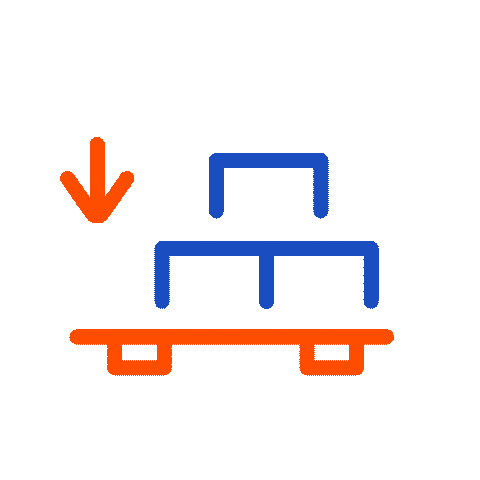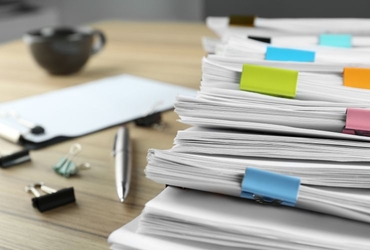
How Verified Gross Mass Regulations Will Impact International Shipping



The International Maritime Organization (IMO) has amended the convention for the Safety of Life at Sea (SOLAS). Effective from July 1, 2016, packed containers require the provision of verified gross mass (VGM) information. Global law prohibits the loading of containers without specified VGM. What is the impact and the status of implementation of this new VGM regulation?
The new requirements for verified gross mass information apply to all packed containers to be loaded on a vessel under SOLAS regime in international maritime traffic. We have already provided an overview of guidelines and concerns in our SOLAS Verified Gross Mass 101. In the following, we will look at the status of implementation for the new regulations and how they will impact international shipments.
Gross Mass Verification Methods
How is VGM determined? The regulations outline two permissible methods for verifying gross mass of packed containers:
Method 1: The weight of a packed and sealed container is determined with calibrated, certified equipment.
Method 2: The weight of individual units of cargo within a container are added up and, together with the material for packing and security as well as the tare weight of the container, result in the gross mass. A national regulatory body needs to approve and certify this method. It is not practical for bulk commodities like scrap or grain.
Weight estimation is not permitted under any circumstances. At this point, it seems likely that weighing containers at the terminal will be a widely-used procedure due to availability of equipment. However, it requires advance notice and that VGM information is sent back to the shipping company; some ports and terminals refuse containers with no VGM (see below). The adoption of self-weighing options will likely be slow because equipment needs to be certified.
VGM Weighing Technology
VGM regulations are causing an increased demand for container weighing capabilities. To keep capacity at least level with demand, technology companies are introducing portable solutions for container weighing. Implementing container weighing in the shipping process is far from uniform. While some ports will offer solutions at terminal gates or within terminal grounds, jurisdictions like New Zealand will require weighing in advance since their terminal rule is simply: NO VGM, no entry.
Container weighing is becoming an emerging and increasingly-busy market. Shippers who feared having to implement prohibitively expensive technology can rest assure that there are simple solutions available to meet VGM requirements. New Zealand company Bison has developed mobile container weighing systems: one with four load cells under the corners of a container, and one for weighing a container while it is loaded onto a truck chassis. UK company Hy-Dynamix also offers a self-contained solution with no need for cranes or weigh-bridges. Their Hy-Weight uses four corner hydraulic elevation jacks that can weigh containers up to 35 tonnes.
Impact On The Shipper
The new IMO regulation names the shipper as the responsible party for providing the carrier and terminal representative with VGM for each container prior to loading onto the vessel. In this context, the shipper is the legal entity named on the multi-modal transport document (such as the Bill of Lading or Sea Waybill) who has been contracted for carriage by a shipping company. Even with delegation, the shipper is responsible for providing Verified Gross Mass information.
VGM information for containers needs to be provided on shipping instructions either manually or via EDI (Electronic Data Interchange).
Verification of Gross Mass needs to be planned into the shipment process, integrating weighing service with supply chain members such as freight forwarders, trucking, terminal, shipping line.
As the legally responsible party for obtaining and providing VGM, the shipper needs to be aware of cost impacts for this service.
Local legislation and imposed penalties or fines might differ.
Non-compliance or delayed VGM information will result in refusal to load containers.
Impact On The Vendor
Under the new regulations, containers with no VGM are prohibited from loading. This makes it the terminal operator’s obligation to check for VGM details before scheduling containers for stowing. The consequences and fines are dictated by national legislation. Because VGM information can come from the shipper or carrier, terminal operators need to have a process (such as EDI) in place to receive verified gross mass specifications. If containers are weighed at the terminal, the obtained information in turn needs to be sent back to the carrier.
US Shippers
A large proportion of US exporters still don’t know how to comply with verified gross weight regulations. An American Shipper survey outlines the complexity of managing the new regulations. 69% of shippers are puzzled about compliance and expect at least some of their shipments to be refused for loading because of non-compliance. With forwarders effectively being the shipper because their name is on the bill of lading, the figure might be even higher. 60% of freight service providers are unaware about compliance. Due to internationally differing VGM enforcement, the report foresees delays if not chaos until processes are implemented, tested and refined. Whereas UK companies seem to prefer the weighing option for VGM, most US respondents believe the calculation of method 2 will be used more for providing VGM. Meanwhile, according to AgTrans, the largest US export shipper, US ports ready to offer weighing are already seeing increased cargo flows.
Asian Shippers
In Asia as in much of the rest of the world, authorities have so far offered little to no guidance on the implementation and enforcement of verified gross weight regulations. The shipping software firm CargoSmart reports that only 18 out of 162 SOLAS countries have published anything on container weight rules. Shippers are confused by the wide variation of rules in different countries and unclear guidelines. Despite a majority of global export containers originating from Asia, only 7 Asian countries have published guidelines. Lionel Louie, CCO of CargoSmart, has called Asian countries “not well prepared for the new SOLAS rule.”
In China, the Maritime Safety Administration (MSA) says it will randomly spot-check export containers. Should the difference between their result and the declared VGM exceed the maximum allowable weight discrepancy (+/- 5% or 1 tonne, whichever is smaller), a vessel is not permitted to sail until the error is corrected. The MSA also advises that VGM method 2 (accumulative weight) needs to comply with accuracy standards. According to CargoSmart, most Asian exporters are likely to choose this method for cost considerations and lack of weighing capacity at Asian terminals.
Practical And Pragmatic Approach to the VGM
The Maritime Safety Committee of the IMO itself has suggested a “practical and pragmatic approach” to the new SOLAS VGM requirements, at least for the initial three months succeeding launch on July 1. The Maritime Safety Committee circulated an advisory note to administrations, port state control authorities, companies and terminal operators urging leniency. Flexibility is especially needed for containers packed before the deadline on July 1 and then subsequently transshipped, therefore reaching their destination port with no verified gross mass information. The circulated memo explicitly states that these containers should be accepted despite non-compliance.
While this advice addresses concerns for a transitional period of three months until October 1 , it is not binding and shippers will not know how much leniency they can expect from countries, ports and carriers. The MS Committee also emphasized that VGM regulations are not the only SOLAS regulations or IMO instruments covering stability and safety of ships or containers.
When shipping consultancy Drewry recently surveyed international shippers, more than half of them expected VGM related cargo delays.
How have the VGM changes impacted the industry? Read our analysis here!
Related Articles


